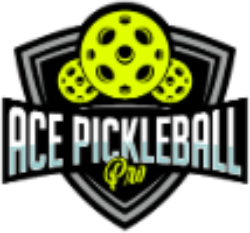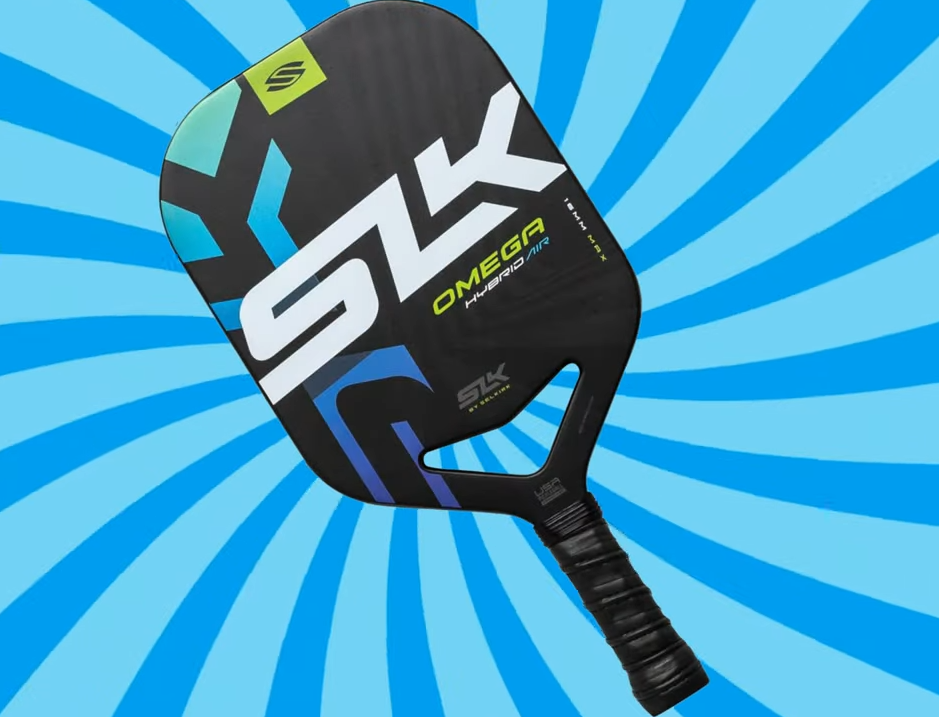Ace Your Game: How Beginners Can Choose the Right Pickleball Paddle for 2025 and Beyond
Why Paddle Choice is More Important Than You Think
When I first grabbed a random paddle and hit the court, I thought, “They’re all basically the same, right?”
Wrong.
The wrong paddle quietly sabotages your game: shot inconsistency, wrist fatigue, slow improvement.
Choosing the right paddle isn’t about hype. It’s about unlocking your natural strengths, preventing injuries, and building a game that scales with your future skills.
✅ Mindset Shift: Your paddle isn’t just a tool. It’s your first coach.
The Paddle Selection Matrix (Strategic Framework)
Before buying, ask yourself:
- Do I naturally rely on power, precision, or a mix of both?
- Do I need more fast hands or stability?
- Do I want to enhance spin, control, or raw power?
🔵 Player Types and Their Best Paddles:
| Player Type | Strengths | Struggles | Best Paddle Characteristics |
|---|---|---|---|
| The Power Player | Aggressive, fast net play | Overhitting, control issues | Mid-to-heavy (7.9+ oz), Nomex or aluminum core |
| The Control Artist | Touch shots, finesse | Lack of power on drives | Light-to-mid (6.8-7.8 oz), polymer core, lightly textured |
| The All-Around | Adaptable, balanced | Needs consistency across shots | Midweight (7.3–8.4 oz), composite, standard shape |
Quick Win Tip: 80% of beginners are secretly “Control Artists” at first—even if they think they want power!
Material Science Secrets: What Your Paddle is Made Of
Paddle material affects: power, control, injury risk, and shot feel.
| Material | Power vs Control | Weight | Durability | Best For |
|---|---|---|---|---|
| Wood | High power, low control | Heavy | Ultra-durable | Budget testing, casual play |
| Composite | Balanced | Midweight | Very good | Best starter choice |
| Graphite | High control, less power | Light | Moderate | Precision-focused players |
✅ Pro Tip: Composite paddles are the beginner’s secret weapon — affordable, forgiving, and versatile.
Paddle Weight: The Hidden Performance Booster
Most beginners wrongly think paddle weight is just about “heavy vs light.”
In reality, paddle weight rewires your entire game.
| Weight Class | Benefits | Drawbacks | Best For |
|---|---|---|---|
| Lightweight (6–7.8 oz) | Quick reactions, more control | Less power, possible wrist fatigue | Precision players, injury prevention |
| Midweight (7.9–8.4 oz) | Balanced power and control | None major | Beginners and generalists |
| Heavyweight (8.5+ oz) | Easy power, less swing effort | Slower net play, wrist strain | Tennis converts, power hitters |
✅ Smart Move: Start midweight. Upgrade lighter or heavier once you discover your play style.
Grip Size: Why Small Hands Win Big
Grip size influences control, spin, and injury prevention.
Here’s a simple guide to grip sizing:
Hold a paddle naturally.
Slide your opposite index finger between fingers and palm.
Quarter-inch gap = ideal.
| Grip Size | Advantages |
|---|---|
| 4.0–4.25 in | More wrist action, better spin, injury protection |
| 4.5 in | Balanced |
| 4.75+ in | Stability, less wrist movement |
✅ Beginner Default: Start with a 4.25-inch grip. Adjust later with overgrips.
Core Materials: Your Paddle’s Hidden Engine
The core determines ball control, power delivery, and noise level.
| Core Type | Power | Control | Feel | Best For |
|---|---|---|---|---|
| Polymer (✅ Best for beginners) | Medium | High | Soft, quiet | All-around players |
| Nomex | High | Low | Hard, loud | Aggressive hitters |
| Aluminum | Medium | High | Crisp, precise | Control players |
✅ Default Choice: Polymer core — gentle on wrists and forgiving on mishits.
How Your Paddle Choice Should Evolve Over Time
| Stage | Focus | Paddle Evolution |
|---|---|---|
| Beginner | Learn control, footwork | Composite, midweight, polymer |
| Intermediate | Add spin, tactical shots | Textured composites, lighter weights |
| Advanced | Customization & mastery | Graphite face, tuned grip, optional lead tape for balance |
Future-Proof Tip: Your first paddle isn’t your forever paddle. Expect to upgrade as your game grows.
The Pickleball Paddle Blueprint: A Decision Tree for 2025+
(Click here for our full Paddle Choosing Guide.)
1️⃣ Are you a power player or a control player?
Power ➔ Mid-heavy paddle
Control ➔ Light-mid paddle
2️⃣ Want to generate more spin?
Yes ➔ Lightly textured surface
No ➔ Smooth face OK
3️⃣ Are you playing competitively?
Yes ➔ USAPA-approved paddle only
No ➔ Prioritize comfort and affordability
✅ Fallback Default: Composite, midweight, polymer-core paddle, ~$70.
🚫 3 Mistakes Beginners Must Avoid (or Pay the Price)
❌ Overpaying: A $70 paddle often outperforms a $200 one for beginners.
❌ Wrong Grip Size: Too big = injury risk. Always size down first.
❌ Ignoring Paddle Shape: Standard shape = biggest sweet spot = better results. Learn why paddle shape matters here.
The Beginner’s Pickleball Paddle Toolkit
✅ Material: Composite
✅ Weight: 7.3–8.4 oz
✅ Grip Size: 4.25 inches
✅ Core: Polymer
✅ Surface: Lightly textured
✅ Shape: Standard
✅ Budget: $50–$100
Final Takeaway: Choose Your First Paddle Like a Future Pro
Choosing your first paddle is like choosing your first coach—it sets the tone for everything that follows.
✅ Smart paddle choice = faster improvement
✅ Wrong paddle choice = months of frustration and preventable injuries
Play the long game.
Invest in yourself.
Train like you mean it.
Start your journey with Ace Pickleball Pro here.
Frequently Asked Questions About Pickleball Paddles (Beginner Edition)
What is the best pickleball paddle material for beginners?
Composite paddles are the top choice for beginners. They balance power, control, and affordability — basically the “triple threat” you want when starting out. Learn more about what makes a good pickleball paddle here.
How do I know if a paddle is too heavy for me?
If after 30 minutes of play your wrist feels tight or your shots start sailing long, chances are your paddle is too heavy. Start with a midweight paddle and adjust as you grow stronger. (Here’s a deep dive on paddle weight and performance).
What grip size should I choose if I’m unsure?
Default to 4.25 inches — it’s the Goldilocks zone for most beginners. You can fine-tune later with overgrips once you get a feel for it. Full guide on how to choose grip size here.
Can my paddle really affect my improvement speed?
Absolutely. The wrong paddle leads to more mishits, poor form habits, and even injuries. The right paddle gives you better touch, consistency, and confidence. It’s like choosing the right sword for a duel — you wouldn’t show up with a butter knife, would you?
P.S. — A Paddle Isn’t Just Gear. It’s Your Secret Weapon.
Most beginners think a paddle is just “something you hit the ball with.”
But those who climb fastest — the ones slicing through defenses and owning the kitchen — they choose smart, from day one.
Want to shortcut the learning curve? Choose your first paddle like you’re already a pro in training.

